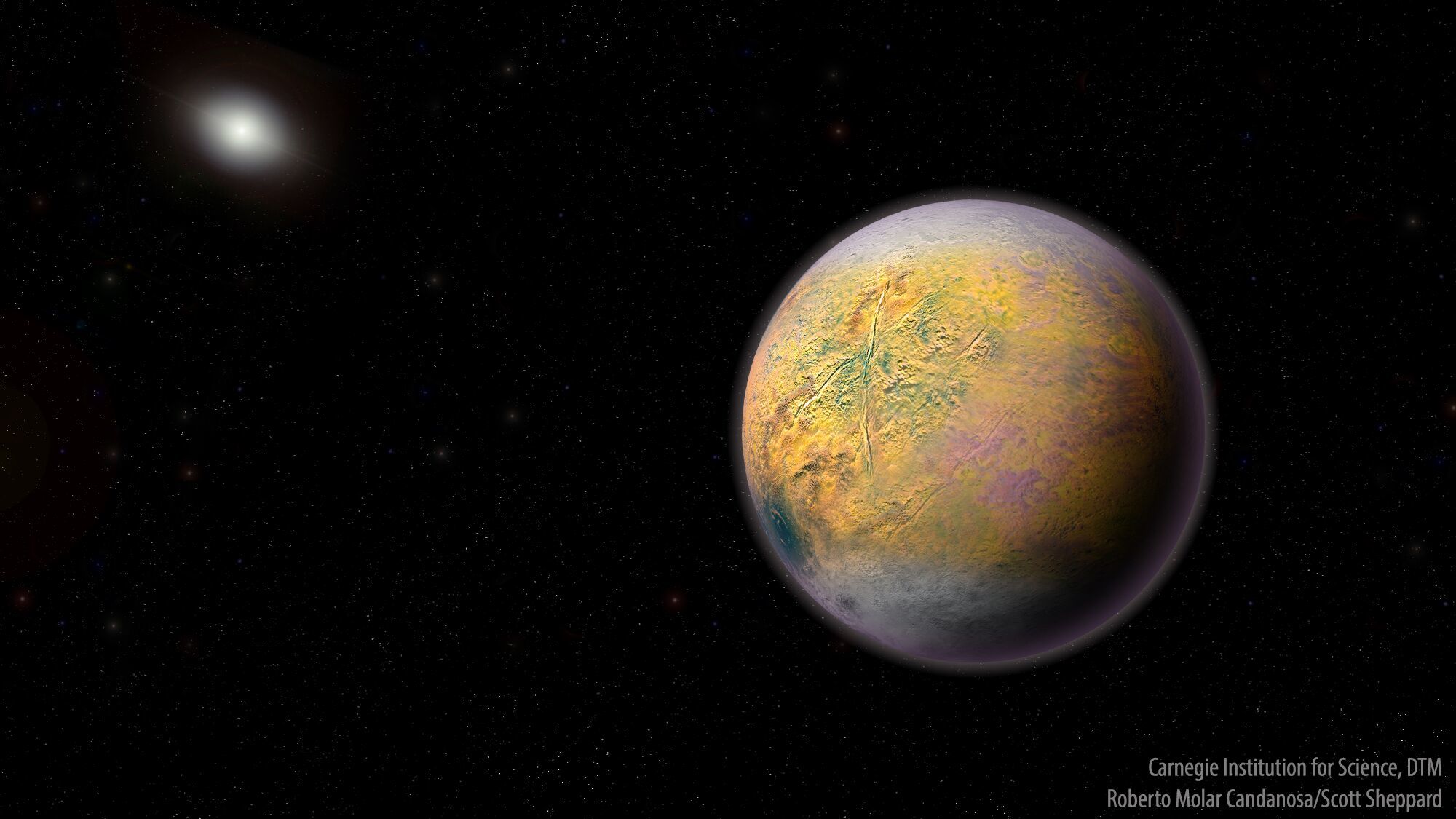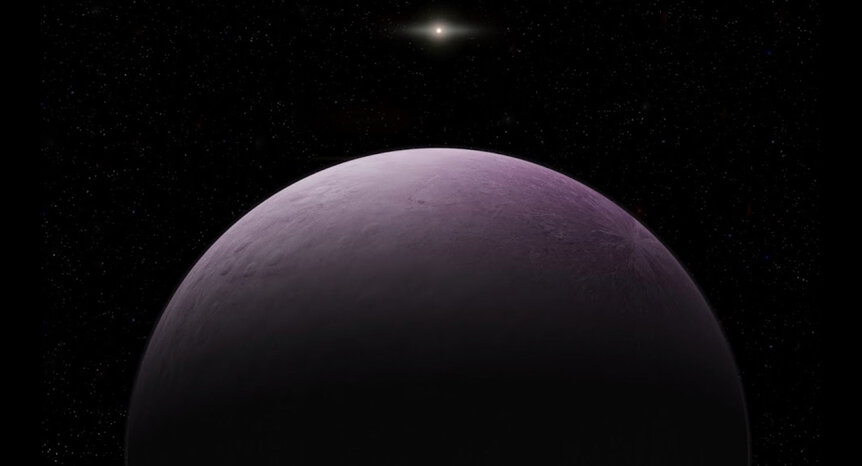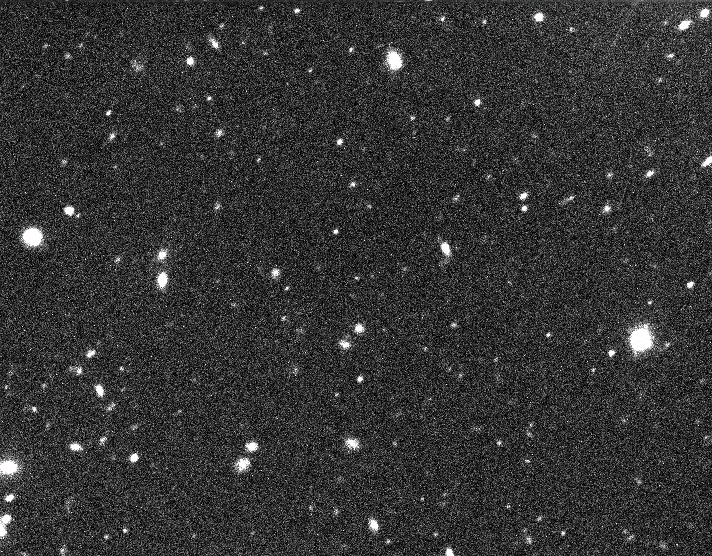Create a free profile to get unlimited access to exclusive videos, sweepstakes, and more!
Could TESS have already seen Planet Nine?

Can TESS find distant solar system objects?
This is an interesting question! TESS is the Transiting Exoplanet Survey Satellite, which scans the sky looking for dips in starlight when planets pass in front of their host stars. To do that it looks at gigantic chunks of the sky all the time, so it sees lots of different things, not just clues of the existence of exoplanet. So if there's a big icy object orbiting our own Sun out past Neptune, could TESS see it?
A normal first reaction would be no way. These objects are far, far too faint to see. But in a new paper just published some astronomers show how it could be done.
Sure, if you take a single image, some trans-Neptunian object (or TNO) would likely be invisible. But TESS takes multiple images of the same area, over and over again. If you were looking for a faint galaxy, say, you'd just add up a bunch of images, making faint objects look brighter. But you can't do that for TNOs because they move across the sky; they're in a different spot in each image. They move for two reasons: parallax and orbital motion.
TESS has a highly elliptical orbit around the Earth, about half a million kilometers end-to-end. When it's on one part of its orbit it would see a potential TNO at a slightly different angle than it does at the other end of its orbit, so the TNO will appear to move back and forth in the images as TESS orbits the Earth — that effect is called parallax and I describe it in my Crash Course Astronomy episode on distances. (the classic example is to hold up your thumb in front of your face and look at it first with one eye closed, then the other: It will appear to move back and forth relative to more distant objects).
Also, a TNO is orbiting the Sun, and moves over time. Worse, if you don't know the distance to it — after all, we're hoping to discover an object here, so we don't know much about it — how do you compensate for those motions?
Well, you… guess. Seriously. For given distances the parallax can be determined, as well as how fast the object would be moving. You can also guess as to its direction. Now, we can't move TESS like a normal telescope; it's not designed to be pointable in that fashion — it sweeps its field of view around the sky, eventually seeing everything, but it's not pointable per se. But, after it takes observations, that data can be processed to compensate for those motions after the fact.
Basically, once they're in a database, the images can be shifted by the predicted motion, added together, and then searched for brighter objects. Since this is all done later using software, you can use lots of different values for the distance and orbital motion and see if anything can be found (this technique was done with Hubble some years back, by the way, and several TNOs were found; a variation on this technique did even better, finding 14). Heck, you can look for objects on any orbit, including ones that go backwards. It's just computer time, so why limit yourself?
To test this idea, the astronomers ran their software on TESS data this way with three known TNOs, and it worked! They were easily able to see Sedna (diameter of ~1,000 km, 12 billion km away), 2015 BP519 (~500 km, 7.5 billion km away), and 2015 BM518 (~230 km, 5.4 billion km away) in previously taken TESS observations.
They found that, statistically speaking, they should be able to see essentially any object at a near-infrared magnitude of about 21. Magnitudes are the way astronomers measure brightness of objects; the faintest object you can see by eye is roughly magnitude 6, and each step in magnitude is equal to a drop in brightness by a factor of about 2.512 (it's a logarithmic scale, based on how our eyes detect light). Magnitude 21 is about a million times fainter than what your eyes can see! So that's pretty faint.
In fact, they posit, an object bigger than Sedna might be detectable even farther away. So like, say, Planet Nine, which may exist in the black way past Neptune. We don't know how big or far away P9 might be, assuming it's real, but estimates put it at a near-infrared magnitude of between 19 and 24.
So, wow: It's entirely possible that if Planet Nine exists, it could already have been observed by TESS! That's pretty interesting. Mike Brown and his team are still looking for it using ground-based telescopes, which is likely a better way to find it (they look pretty deeply over areas of the sky where P9 is predicted to be, seeing fainter sources) but who knows? I asked Brown (full disclosure: We're old friends) and he told me it's certainly possible P9 could be found this way. It may even be bigger and closer than originally thought, making it easier to see in TESS data. The problem is that we don't know its orbit at all, so you have to test over a huge range of possible orbits, and statistically speaking you're likely to find something in a test that big even if it's not real (a "false positive"). Still, it's very much worth giving this a shot.
Even if we're not worried about P9, this is still a cool technique to look for anything big and bright enough to see out there, and those data are free! All you have to do is write the software to go through them. It sounds like a great idea to me, and I hope their treasure hunt goes well. There are a lot of unknown objects out there in the suburbs of the solar system. All we have to do is find them.





























